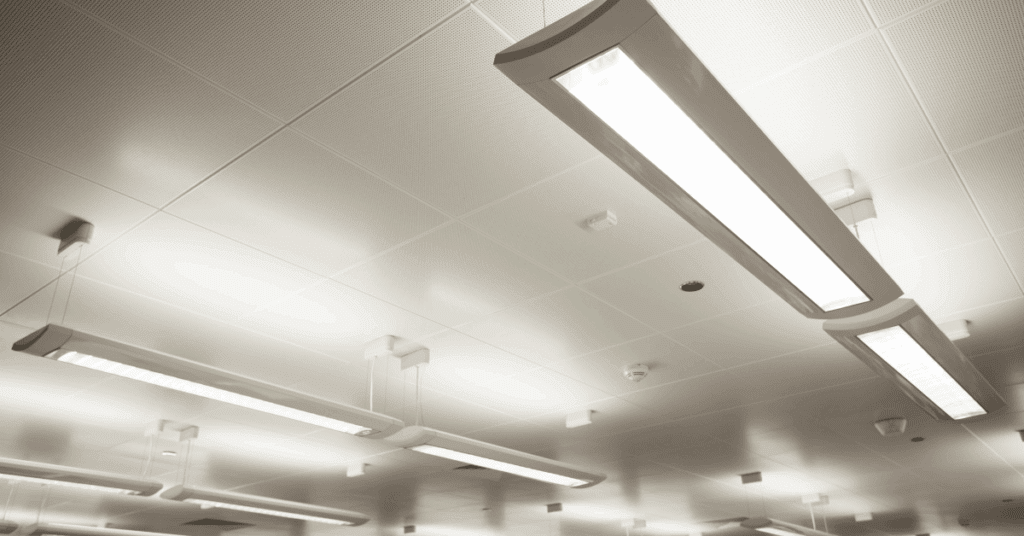
Lighting has always shaped how we feel in a space. But only recently have we started measuring how much it affects how we sleep, focus, and function.
More building owners are rethinking lighting not just as a utility, but as something that influences health and well-being. This shift is especially relevant in commercial spaces where people spend long hours indoors, often under lighting that is too bright, too blue, or too unchanging.
Circadian lighting reflects a broader change in perspective. Instead of asking how much light is enough, the question now is whether the light supports the people who use the space.
The Connection Between Light and Biological Timing
Circadian rhythms are internal cycles that influence sleep, hormones, and mental sharpness. These rhythms respond most strongly to light, especially light that contains blue wavelengths early in the day and warmer tones in the evening.
According to Harvard Health, exposure to bright, cool light late in the day can delay melatonin production and disrupt sleep. That creates problems in buildings where lighting remains static from morning until night.
Modern LED systems can address this with tunable color temperatures and programmable controls. LED lighting for circadian rhythm is designed to shift throughout the day to match what our bodies expect. This approach is often called circadian or human-centric lighting. It brings artificial environments closer to the patterns of natural daylight.
What Research Shows About Circadian Lighting
A growing number of studies support the benefits of this approach. A 2021 review published by the NIH examined the impact of light on mood, alertness, and sleep. It focused on how certain cells in the eye, known as intrinsically photosensitive retinal ganglion cells (IP RGCs), respond to melanopic light and help regulate the body’s internal clock.
When lighting systems stimulate these cells in the right way at the right time, people feel more awake during the day and sleep better at night. These systems are now being used in offices, hospitals, schools, and shared workspaces to improve comfort and reduce fatigue.
Real-World Applications for Commercial Buildings
Many buildings still rely on one type of light across all areas and times of day. These systems may be efficient, but they often don’t support occupant comfort. Circadian lighting gives property managers more control over color, timing, and intensity.
New LED systems allow for:
- Automated changes to lighting tone throughout the day
- Personal controls at the workstation level
- Glare reduction using improved optics
- Integration with natural daylight when available
In particular, LED lighting for circadian rhythm gives businesses a way to enhance both comfort and energy efficiency without major structural changes, making it a smart investment for long-term occupant well-being.
Not sure what type of lighting is right for your business? Check out our resource: Choosing the Right Commercial Lighting for Your Business
Design Considerations and Practical Tradeoffs
Lighting needs can vary widely across buildings. Some people work better in low-light environments with targeted task lighting. Others need higher light levels and cooler tones to stay focused. For this reason, flexibility is now a key design goal.
Lighting designers are using smaller fixtures and better optics to create spaces that feel balanced and non-intrusive. The fixtures themselves can often be hidden within the structure, allowing light to support the space without drawing attention to the source.
As ECMag noted, building owners often need to weigh cost against flexibility. In many cases, upgrades start with key areas like shared spaces, meeting rooms, or patient zones. These spaces benefit most from dynamic lighting and give users a better sense of control.
Lighting and Compliance
Agencies like OSHA have long acknowledged the importance of lighting for comfort and productivity. Their guidelines recommend reducing screen glare, positioning overhead lights correctly, and avoiding over-illumination. Adding layers of light and using controls to adjust intensity can help meet these recommendations and reduce visual strain.
In Colorado, compliance isn’t just best practice, it’s the law. As of January 1, 2025, the statewide ban on fluorescent lighting makes LED upgrades mandatory in many cases. Learn more about the ban and how to upgrade.
The good news? Local rebate programs and updated energy codes actively support LED retrofits that offer advanced controllability and efficiency features. This not only keeps your building compliant, but it also makes it easier to cut long-term energy costs and increase overall comfort for occupants.
How Mac Electric Supports Smarter Lighting Upgrades
Mac Electric & Lighting Company works with businesses across Colorado to design and install efficient, responsive LED lighting systems. Our team handles projects ranging from government offices to healthcare facilities and multi-tenant properties.
We begin with a building-specific energy audit to assess opportunities for LED upgrades. Our Value Engineering Team will visit your property and perform a free Lighting Audit to analyze your current system, understand your specific needs, and determine how to maximize lighting distribution for your operation.
Looking Ahead
Better lighting design is not about adding more light. It’s about adding the right light in the right way at the right time.
As awareness of occupant wellness continues to grow, circadian lighting is likely to become part of the standard toolkit for building owners and design teams. It offers a simple way to improve focus, reduce fatigue, and create environments that feel more connected to how people naturally function.
